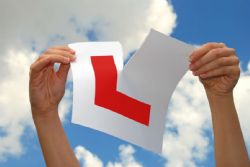
As in most Countries, learning to drive in Spain can be an expensive thing to do, with the average price for a session being around 25€ an hour - additionally you will require further classes to learn the theory, and these can cost up to 30-35€ a month or a one-off fee of around 300€.
Once you have completed both your Practical and Theory training, you will then need to pay for the Exam Fees. In the UK this payment is made for each test that you undertake, whereas in Spain the fee allows you three attempts at passing (However this only allows for 2 attempts for each type of test.) The fee for taking your test is currently approx 165 Euros. If you should happen to fail either of the tests you will generally have to wait around a month before you can take the test again.
One notable difference for learner drivers in Spain is that there is no such entity as a provisional licence – which means that there is no opportunity to practice driving on the road with anybody other than a qualified and approved driving instructor.
The Theory exam in particular is known to be quite difficult as the Spanish Highway Code is very extensive – one of the most detailed in Europe, and has about three times as the amount of content as the UK. On top of that a learner driver is expected to know a certain amount about Car Maintenance and first aid skills. It is surprising that, despite having one of the most rigorous testing procedures in Europe, Spain has one of the very worst road safety records – second only to Portugal.
The theory exam is structured around multiple choice questions – out of which the pass criteria allows just 10% of the answers to be incorrect. It is widely known that most learners fail the theory test for no other reason than simply misreading or misunderstanding the question. It is necessary to pass the theory test before you can go on to take the practical test.
Be aware that the actual practical examination is conducted in a completely different way to how you would expect (at least if you are familiar with driving tests in the UK). The Instructor and Examiner will both be in the car with the student, however it is also possible that other candidates will be too – the examiner simply asks for the various drivers to change around as he chooses and makes his pass / fail decision at the end of the journey.
Assuming that you pass the exam you will be given a green and white L-plate to display in your rear window. For the following first 12 months you can not drive aboven80kph and for the first two years you can not drive with an excess of 0.3g Alcohol in your Blood ( as opposed to 0.5gm for other drivers ). in your native language at this time, you're troubles are nearly solved.
You may be lucky enough to find an Examination Centre that offers the Test in your own language, if not, you will have to take it in Spanish which can be difficult due to the advanced technical questions. The test consists of 40 questions - you can only choose not to answer 3 of them and can fail no more than 4 of them, and some of the questions are lengthy and designed to catch you out. If you should fail the test, don’t expect to be told your overall result or the questions that you failed on – you will just need to re-sit the exam again at a later date in order to proceed. Many native Spanish fail the test the first time themselves, and you should be especially proud of yourself if, as a foreigner, you are able to pass the theory test at the first attempt.
In some cases you may be successful in putting forward a case for reasons as to why you should be considered leniently ( IE your lack of fluency in the language) and this may be to your benefit, however it is easy to understand why many learner drivers choose to take a crash course in the UK in order to obtain their full European driving licence.










